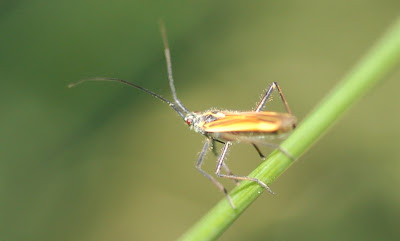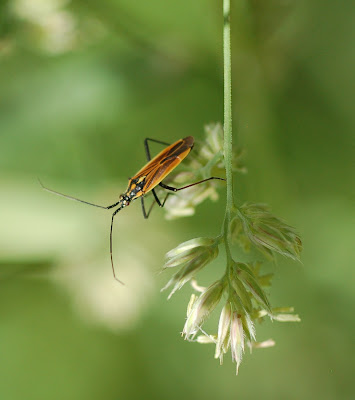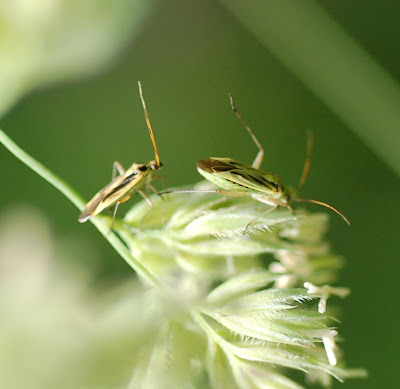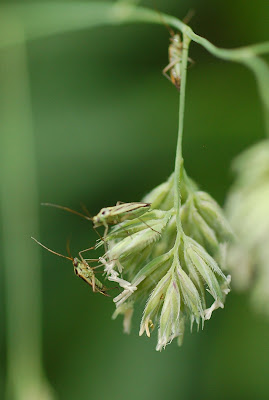
Leptopterna dolobrata is one of Linnaeus' own species, from the 1758 edition of Systema Natura. Although these mirids are reported from all sorts of grasses, I invariably find it on Dactylis glomerata (Orchard Grass), another Linnaeus species. I assume the mirid arrived in North America with its introduced host plant. It is much collected incidentally by researchers looking for other things, so most specimens in collections are sorry-looking, battered things, but in life they are handsome insects with orange coria on the males and green on the females. The adults in these photos were intent on making more Leptopterna dolobratae, and were apt to fly away. In flight they are rather slow, and of a size to be confused with nondescript "flies."


Leptopterna dolobrata has the same Boola-Boola rhythm as Oncopeltus fasciatus, but the juxtaposition of the p's and t's keeps it from rolling off the tongue with the same ease. (Now you know my secret method for learning taxonomic names--in plant taxonomy class, we used to sing them.)


Some Leptopterna dolobrata and Dactylus glomerulus photos and references:
- Cedar Creek Natural History Area's Leptopterna dolobrata entry:
Cedar Creek Natural History Area is a large ecological research site in central Minnesota with natural habitats that represent the entire state....Cedar Creek is owned and operated by the University of Minnesota in cooperation with the Minnesota Academy of Science.
- Birds and Wildlife in Denmark's Leptopterna dolobrata photographs
- The Ecology of Commanster: A Small Village in the Belgian High Ardennes has some habitat and individual photos.
- Dactylis glomerata L.: Orchard Grass references from the USDA's PLANTS database.
No comments:
Post a Comment